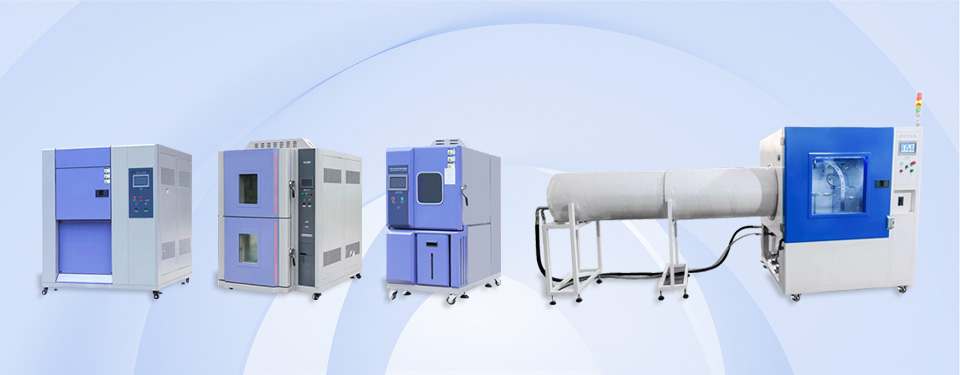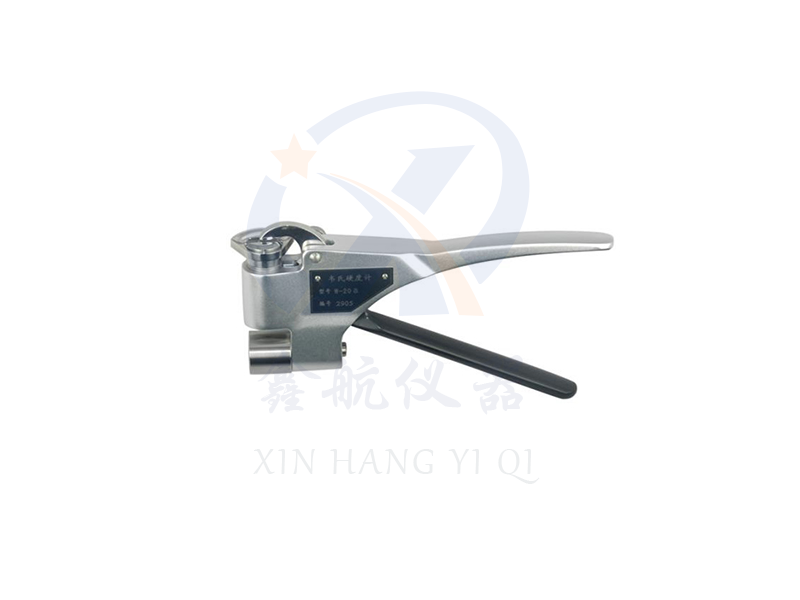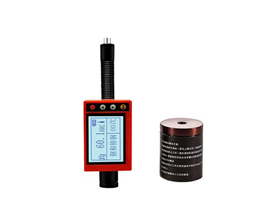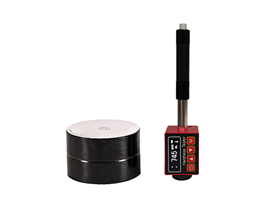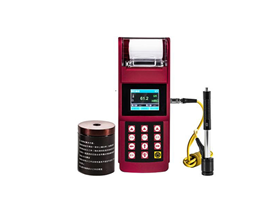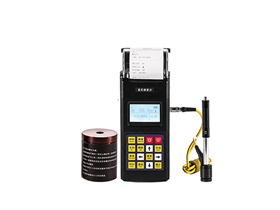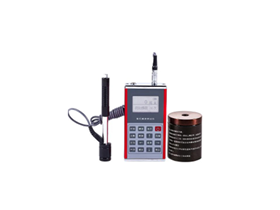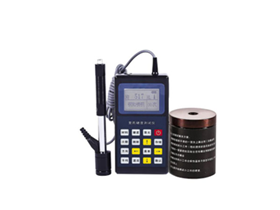major function
● Wechsler hardness, easy to detect, can be overmeasured;
Through anodizing treatment, it is wear-resistant and rust free, with a comfortable hand feel;
Testing multiple metals, with a wide range of applicability for hardness testing;
Mechanical design, spring compression device, not easily damaged;
High toughness window glass, not easily damaged by impact;
Clear scale and accurate measurement;
Easy to use, handheld design, convenient to carry;
Convenient conversion. The Brinell, Rockwell, Vickers, and Vickers hardness values can be obtained through a conversion table;
Applicable materials
Hardness of aluminum alloy profiles, pipes, plates, aluminum parts, and other softer metals
Main uses
The Webster hardness tester determines whether aluminum profiles have aging, whether aging is qualified, distinguishes different grades of aluminum materials and different aging states, and is particularly suitable for rapid and non-destructive piece by piece qualification inspection of batches of aluminum profiles, doors, windows, curtain walls, etc. on production sites, sales sites, or construction sites.
Related standards
Complies with the Chinese Nonferrous Standard YS/T420-2000 and the American Standard ASTM B647-84 (2000).
The Vickers hardness tester is currently a product that meets all of the following standards and regulations.
*ASTM B647-10 "Standard test method for indentation hardness of aluminum alloys using a Vickers hardness tester"
*Non ferrous metal industry standard YS/T420-2000 "Vickers hardness test method for aluminum alloys"
*National Metrological Verification Regulations JJG944-1999 "Metallic Vickers Hardness Tester (Trial)"
*National Metrological Verification Regulations JJG944-2013 "Metal Vickers Hardness Tester"
|
range
|
0-20HW
|
|
accuracy
|
0.5HW
|
|
Instrument weight
|
0.5kg
|
|
Standard configuration
|
One host One standard hardness block (with testing report attached), one spare punching needle, one special wrench, one small screwdriver, one instruction manual, and one portable instrument box
|
|
Optional Accessories
|
Spare pressure needle, standard hardness block, and gauge head glass
|
Instrument Model Table

|
model
|
Application scope
|
Hardness range
|
Wage size(Mm)
|
|
W-20
|
aluminium alloy
|
25~110HRE 58~131HV
|
thickness0.4-6internal diameter>10
|
|
W-20a
|
thickness0.4-13internal diameter>10
|
|
W-20b
|
thickness0.4-8internal diameter>6
|
|
W-B75
|
brass
|
63~105HRF
|
thickness0.4-6internal diameter>10
|
|
W-B75b
|
thickness0.4-8internal diameter>6
|
|
W-BB75
|
Purple copper
|
18~100HRE
|
thickness0.4-6internal diameter>10
|
|
W-BB75b
|
thickness0.4-8internal diameter>6
|
|
W-B92
|
Stainless steel strip cold-rolled thin steel strip
|
50~92HRB
|
thickness0.4-6internal diameter>10
|
Maintenance and upkeep
This instrument belongs to precision instruments, and its service life mainly depends on whether the usage method is correct and whether maintenance is timely and appropriate. The following points should be noted during use:
1. Anti fouling. The instrument should be regularly wiped with a soft cloth during use to remove any dust or dirt adhering to the surface of the instrument, especially on the anvil and sleeve support surfaces. Special attention should be paid to preventing dirt from entering the gaps of the dial or around the pressure needle. A large amount of dirt entering from these areas can affect measurement accuracy or cause malfunctions. Anti rust corrosion. Although all components of the instrument have been treated with rust prevention, improper maintenance or long-term use on the production site without paying attention to maintenance may also cause some components to rust. During use, attention should be paid not only to frequent wiping, but also to waterproofing. Many components will rust when exposed to water, and water entering the meter head can cause rusting and result in the instrument being scrapped.
2. Prevent falling. This instrument is composed of many precision components, and if dropped, it will cause permanent damage to certain components.
3. Do not disassemble. The guarantee of measurement accuracy of this instrument depends on the good coordination of some precision components.
Factors affecting measurement accuracy
1. Sample: The surface of the sample should be cleaned, and dirt on the sample, especially fine sand particles, may affect the measurement accuracy.
2. Sensitivity: When the instrument is within the range of 4HW or above and 17HW above the scale, the sensitivity significantly decreases and the measurement accuracy also decreases. At this time, other hardness testers should be considered for use
3. Sample edge: The distance between the measurement point and the sample edge during testing should be greater than 5mm. Being close to the edge of the sample will affect the measurement accuracy.
4. Adjacent Indentations: During testing, it should be noted that the distance between two adjacent indentations should not be less than 6mm, otherwise the previous indentation will affect the accuracy of the subsequent measurement.
5. Oxide film: Although the hard oxide film is very thin, it can also affect the accuracy of hardness measurement for aluminum profiles. Experience has shown that a thickness of 10 μ The oxide film of m will increase the hardness measurement value by 0.5~1HW.
6. Coating: Various coatings can seriously affect measurement accuracy, therefore, it is required to remove the coating with sandpaper or solvent 9/13
7. Perform hardness measurements after using the metal Vickers hardness tester.
8. Operation: Improper operation can affect measurement accuracy;
8.1 During use, attention should be paid to regularly checking the accuracy of the instrument, verifying whether the instrument's full scale point (20HW) and calibration point are inaccurate. Any inaccuracies should be corrected in a timely manner.
8.2 The surface of the sample should be perpendicular to the pressure needle, and the bottom of the sample should be in contact with the anvil line, otherwise errors will occur.
8.3 Apply sufficient grip force once, but slowly applying force will cause the measured value to be too low.
During the testing process, avoid twisting the sample, otherwise it will cause errors and damage the pressure needle.
Hardness conversion table
W-20Series hardness tester hardness conversion table
|
Webster'sHW
|
rockwellHRE
|
rockwellHRF
|
Webster'sHV
|
|
18
|
101
|
98.5
|
131
|
|
17
|
97
|
95
|
119
|
|
16
|
92.5
|
91
|
108
|
|
15
|
88
|
87.2
|
99
|
|
14
|
84
|
83
|
91
|
|
13
|
79.5
|
78
|
83
|
|
12
|
75
|
74
|
78
|
|
11
|
71
|
70
|
73
|
|
10
|
67
|
66
|
69
|
|
9
|
62.5
|
62.5
|
65
|
|
8
|
58
|
58
|
61
|
|
7
|
54
|
54
|
58
|
|
6
|
49.5
|
50
|
|
|
5
|
45
|
46.5
|
|
|
4
|
41
|
|
|
notes:The data in the table is obtained based on the following information:
1. HW-HRERelationship: According to the United StatesWebsterHardness conversion chart in the company's user manual;
2. HRE-HRFRelationship: According to the United StatesWebsterCompany technical data "Soft Metal Hardness Value Conversion Table";
3. HRF-HVRelationship: According to Chinese standardsGBn166Conversion Values for Hardness and Strength of Aluminum Alloys;
W-B75series Hardness conversion table for hardness tester W-BB75series
|
HW
|
HRB
|
|
HW
|
HRF
|
|
4
|
53.0
|
4
|
30.2
|
|
5
|
53.3
|
5
|
34.9
|
|
6
|
54.1
|
6
|
39.6
|
|
7
|
54.8
|
7
|
44.3
|
|
8
|
56.7
|
8
|
49.0
|
|
9
|
58.5
|
9
|
53.7
|
|
10
|
60.8
|
10
|
58.4
|
|
11
|
63.4
|
11
|
63.1
|
|
12
|
66.4
|
12
|
67.8
|
|
13
|
69.7
|
13
|
72.5
|
|
14
|
73.5
|
14
|
77.3
|
|
15
|
77.9
|
15
|
82.0
|
|
16
|
82.1
|
16
|
86.7
|
|
17
|
86.9
|
17
|
91.4
|
|
18
|
92.2
|
18
|
96.1
|



